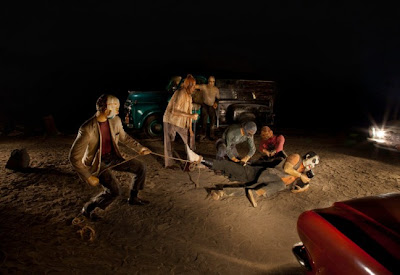click here to start! _
6.3 Significant Technological Developments
The Economist writes "in the past half-century computer technology has evolved in three large jumps each followed by an explosion of new companies, a period of rapid change and then the gradual emergence of a few dominant species that rule until the next digital disturbance." We can add little to this succinct and accurate analysis except to note that we currently exist in one such "digital disturbance."
Entertainment software is one part of the software industry. It involves a large number of firms all competing for the same demand. Entertainment software firms differentiate their products in order to increase consumer demand. Advertising and other ways to increase the demand for a product play an important role with entertainment software. The differentiated product differs the entertainment software market from a purely competitive market and is classified as a monopolistically competitive market. Firms in a monopolistically competitive market produce differentiated products to increase the demand for their products so they can enjoy profits. These firms want people to think that their product is unique so they can raise the price of their product and not suffer decreases in demand for their product. Monopolistically competitive firms are often able to raise their prices which is why the demand curve for monopolistically competitive firms has a negative slope. To obtain the ideal product mix monopolistically competitive firms must reallocate their resources. Other resources must be used to raise the MC closer to the price of the product for resources to be allocated more efficiently. A monopolistically competitive firm has an opportunity to raise its prices unlike a perfectly competitive firm who has a perfectly elastic demand curve. Due to its relatively inelastic demand curve, a monopolistically competitive firm may hold a price which may produce extra normal profits, but since there is no barrier of entry or exit in this market the profits of the firm would diminish in the long run.
Increasing competition will shift the demand curve to the left (decrease in demand) and the monopolistic price will decrease, but will stay higher than the competitive firms prices. A monopolistically competitive firm never obtains monopolistic profits in the long run because of the increased competition.
The entertainment software industry has the research and innovation costs as the most important towards the production process. In the short run these costs are high and most companies utilize the sales and marketing departments of other companies to supplement these costs. Once the product has created a niche for itself in the market then the company experience small changes in the total costs with respect to increase in outputs. As profits come in the company is capable of taking over its own sales and advertising costs and from there on continues to sell profitably for years until another disruptive technology emerges.
Make an online artwork that others can interact with and that reflects the current "digital disturbance" that we find ourselves in. You must articulate this in your own thoughts and words.
Requirements: 1) Artwork must be interactive broadly defined. 2) This work should address the challenges of the digital environment. 3) This work must be accessible on the platforms we have available in class. 4) You must be respectful and abide by the rules of the environment that you are working within.
Some examples can be found
here and
here.
Time frame for this assignment is 5 hours of class time plus outside time as well. Assignment must be on your blog before class on
February 21, 2012.








